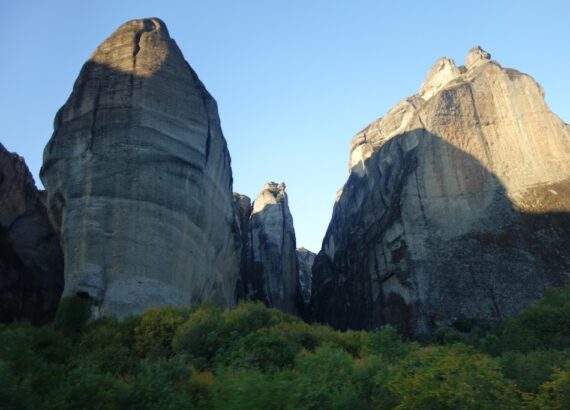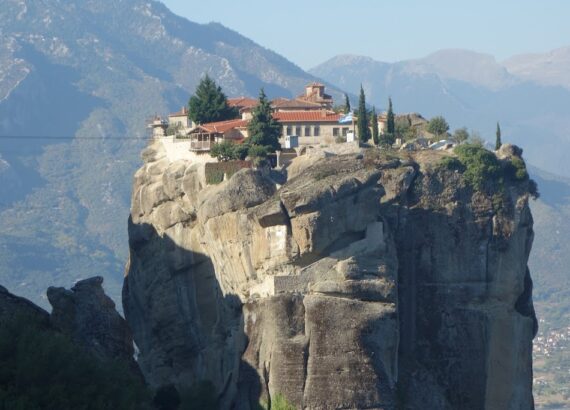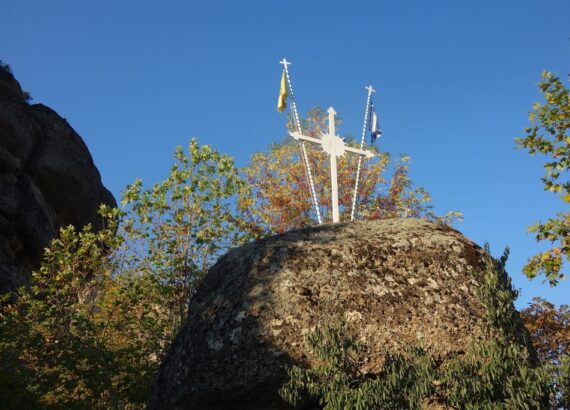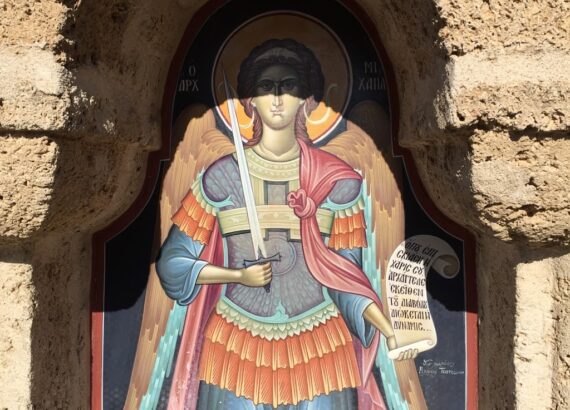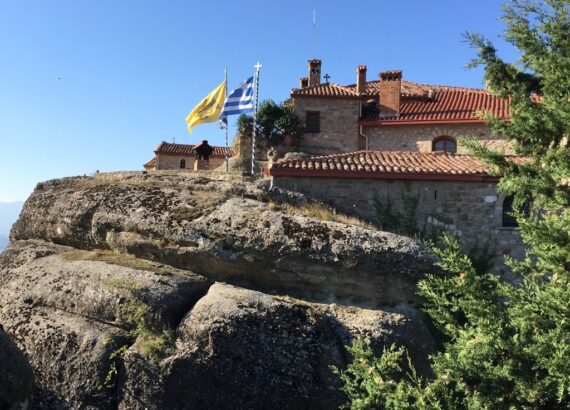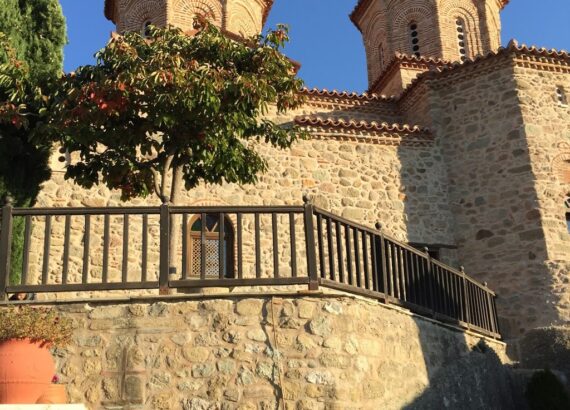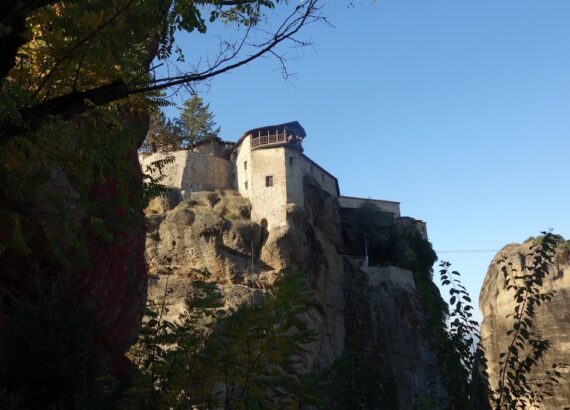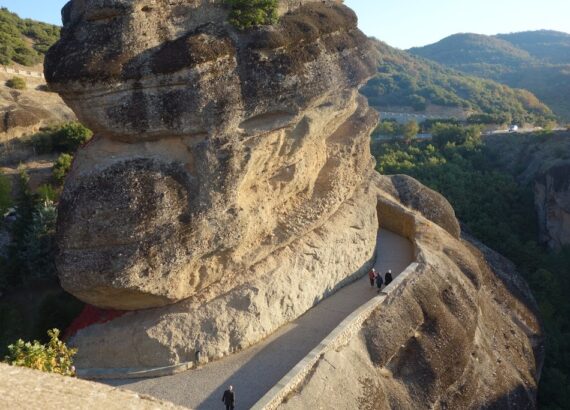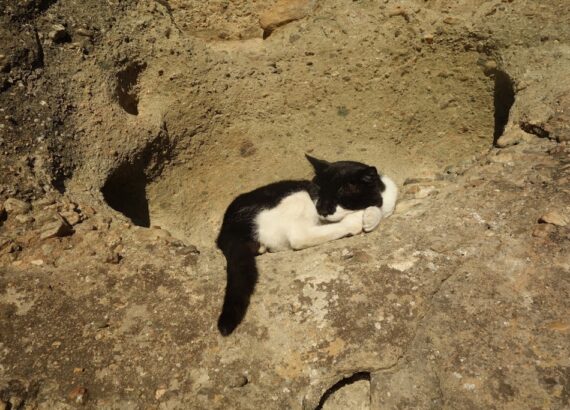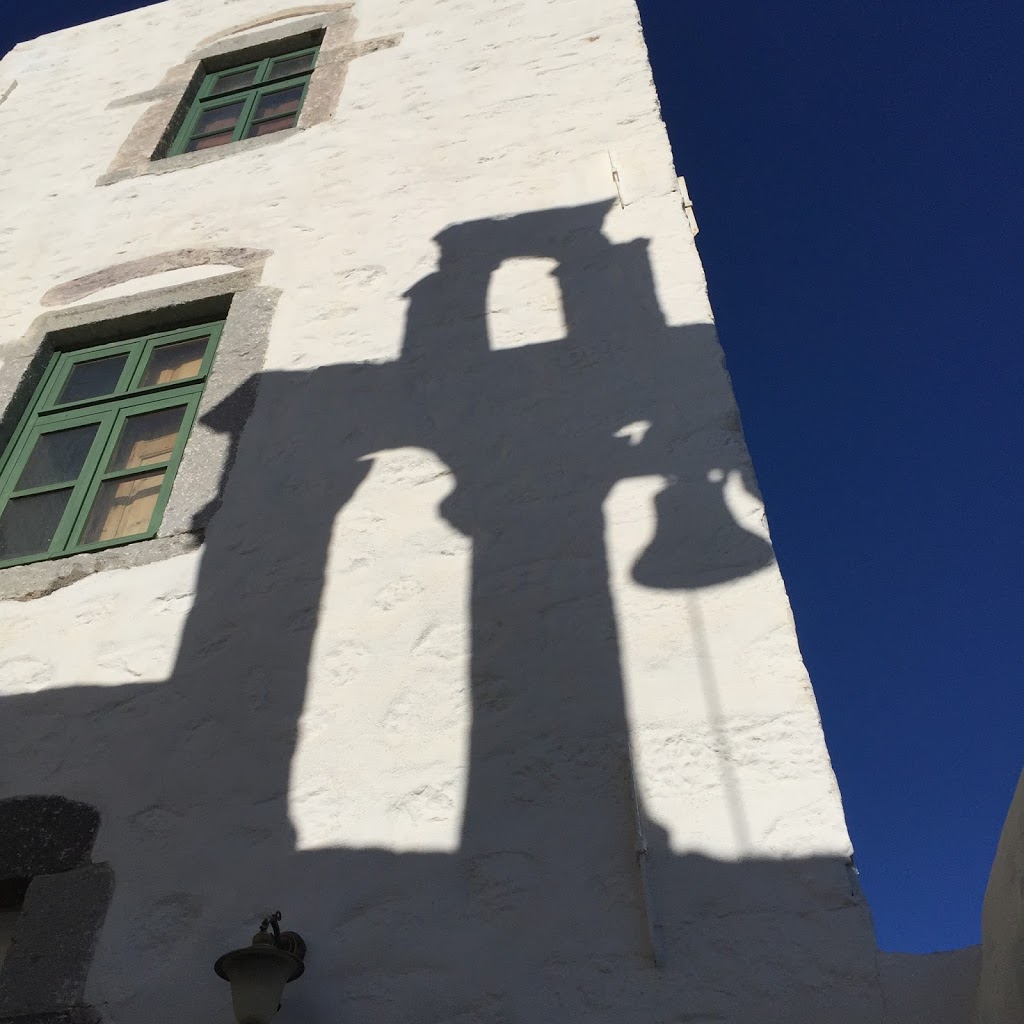METEORA – CLOSE TO GOD
Now, only six of these religious monuments continue to function while the ruins of the others lie lonely and desolate. Even those that remain are barely populated with dwindling numbers of ascetics desiring the isolated life: about 15 monks and 40 nuns.
Doubly covered, I began to look around. There are two churches, the oldest built in 1545, was heavily damaged by Germans in WWII. The second church, built in 1798, has relatively modern frescoes, some done in 1915, and while lovely, they don’t hold the same fascination for me as other-worldly Byzantine era masterpieces.
The monastery reportedly has a piece of the True Cross and relics of John the Baptist although they weren’t on view, but the refectory holds marvels: icons, embroidery, silver and ancient parchments. The most interesting icon was done by a painter from Crete, later known as El Greco when he moved to Spain to produce the elongated and luridly-colored paintings for which he is famous.
Varlaam or All Saints Monastery, 1200 feet above the plain, began as a cluster of cave-dwelling monks about 1350 and transformed into a church and cluster of outbuildings in 1518. Stairs were cut in 1923 and we began the long walk and then climb what seemed to be a thousand steps to visit the church, said to have been built in twenty days after collecting the materials for 22 years.
Some creatures took a break on the way up.
As I looked at the winch and rope net used for humans and materials I wondered how many monks and visitors fell to their death as they reached for heaven. The thought of swinging out over the abyss was terrifying. Now a small cable car does the job safely.
The interior of the small church with brilliant gold, red and blue icons; lamps; and furnishings glowed in the dim light, a truly holy atmosphere. Many of the chairs and tables in the church were of inlaid wood in the Syrian style. When I inquired why our guide reminded me that the patriarch of the Eastern Orthodox church remains in Istanbul the former capital of the late Roman Empire known as Constantinople. I wished to take photos but unsurprisingly none were allowed
What were these men’s lives really like divorced from the world and its cares? It seemed to me it would have been a short life of privation, freezing cold and snowy in the long winters, with chilblains and arthritis wracking their bodies in an unremitting struggle to reach a state of holiness through ritual and prayer as flickering candles lit the golden icons.
All photos copyright Judith Works
